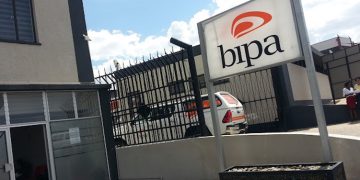
Namibia has attracted potential investment worth N$161 billion as of March 2023, with a potential to create 122,000 new jobs in the country, Namibia Investment Promotion and Development Board (NIPDB)‘s Chief Executive Officer and Chairperson Nangula Uaandja has revealed.
About a quarter of the investments, valued at N$38.8 billion, are at implementation stage, while about 60% valued at N$95.3 billion, are still pending.
“Our pipeline is worth N$161 billion as of March 2023, and it is in various stages, the ones that have become operational are worth N$2.8 billion. Where capital has started to flow are valued at N$24.1 billion and investments have started in the country,” she said on Friday as part of an update of the trade facilitation organisation’s 500 days of existence, as detailed in their maiden annual report.
She added that the pipeline only represents the value of private projects that were facilitated by the NIPDB.
“All our efforts are contributing to improving the general economic environment there many other investments are talking place without the support of of NIPDB and are not included in the pipeline,” NIPDB’s CEO said.
Uaandja mentioned that some of these are new investments, others are business rescues where one project was about to close and then NIPDB worked together with government entities to save the project to protect jobs, and others are mergers and acquisitions.
According to their annual report, based on the multiplier effect, these investments are expected to generate a total of 122,000 new jobs.
Furthermore, “the impact of investment already facilitated towards capital deployment or implemented is N$4.83 billion, and the total GDP impact of potential investment is N$185.51 billion.”
Similarly, the treasury impact of potential investments is N$17.50 billion.
“Renewable energy has the highest interest with 39%, closely followed by agriculture and food processing with 24%, meanwhile oil and gas comes in at 19% as there is no total energy and shell exploration but only Kudu is facilitated by NIPDB,” she said.
Meanwhile, metals and other sectors all take up less than 18% combined.
Nangula shared that during the boards first year, they have determined 5 five priority sectors in addition to the five proposed by Harvard Growth Lab for a total of 10 priority sectors for Namibia.
“Renewable Energy, Food Industry, Tourism, Transport and Logistics, Metals, Mining, and Adjacent Industries are among the sectors identified. In addition, Machinery and Electronics, FINTECH, Exploration (Mining and Oil and Gas), Chemicals and Basic Materials, and Services (Digital and Global Business),” she said.
Meanwhile, Uaandja also highlighted certain hurdles that investors face such as Input cost, low incentives, energy cost and availability amongst others.
“Some of the challenges include legislative gabs such as incentives , land bill, administrative gabs and turn around times, the time taken by OMAs and SOEs to respond to requests, issue permits and land complications can slow down the process of starting operations,” she said.
She further highlighted funding acquisition and market access as challenges, amongst others.













